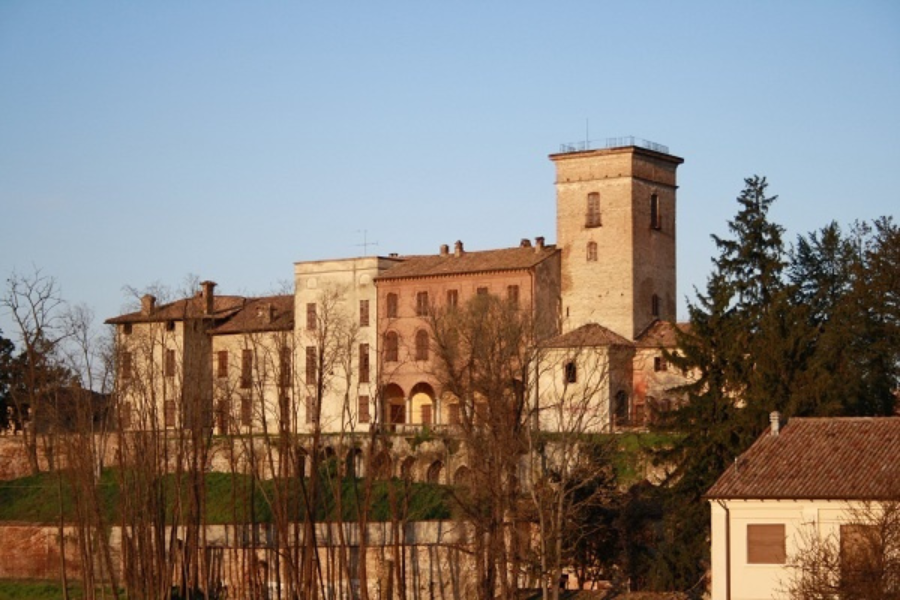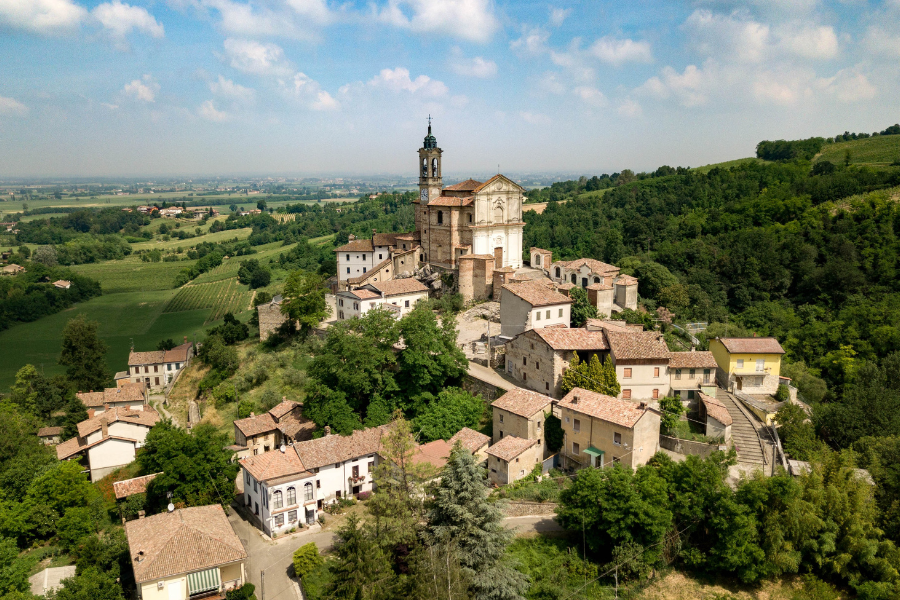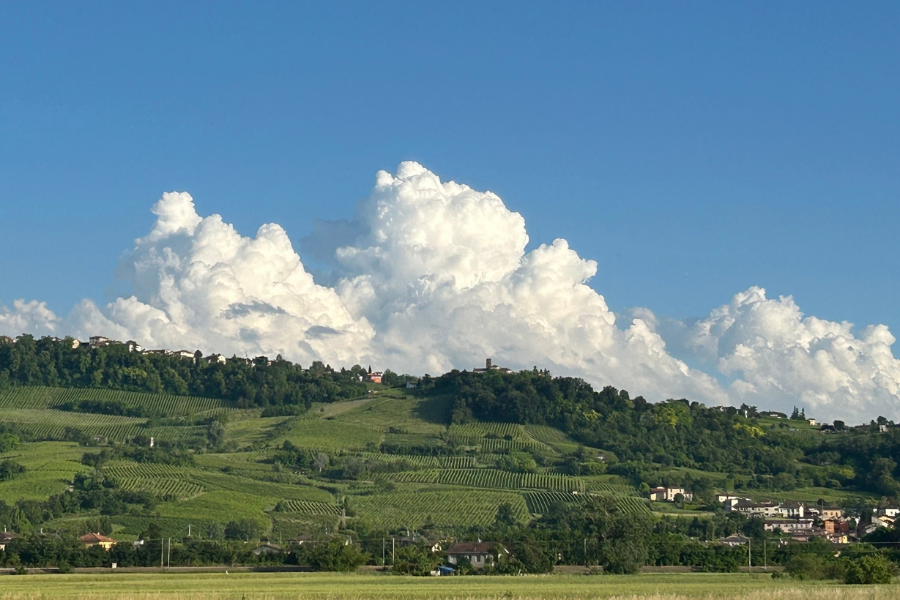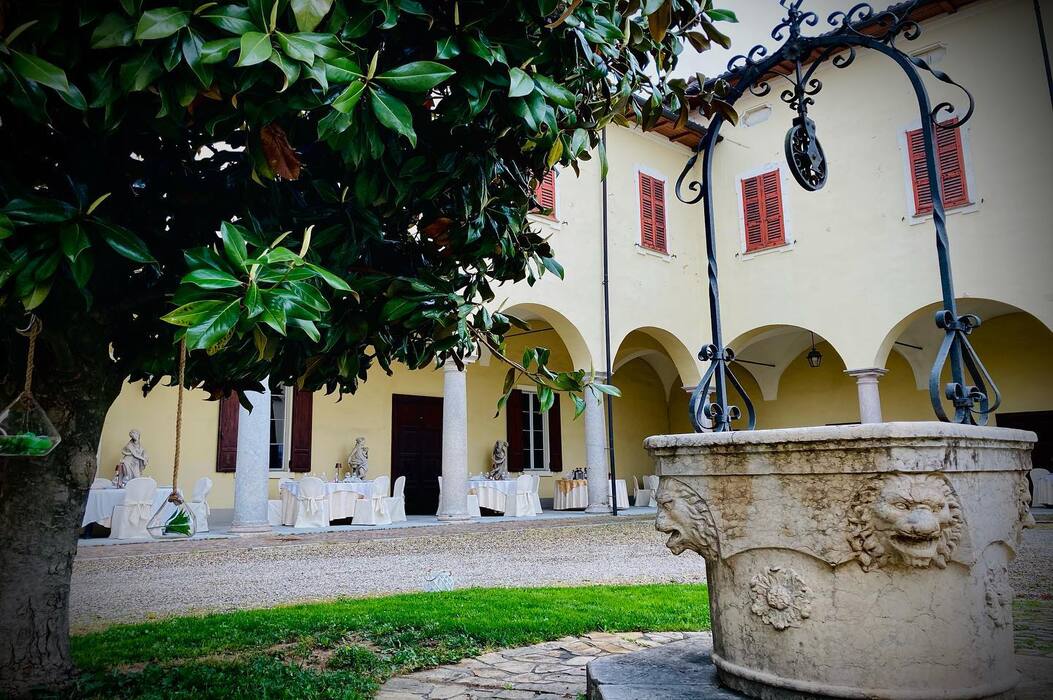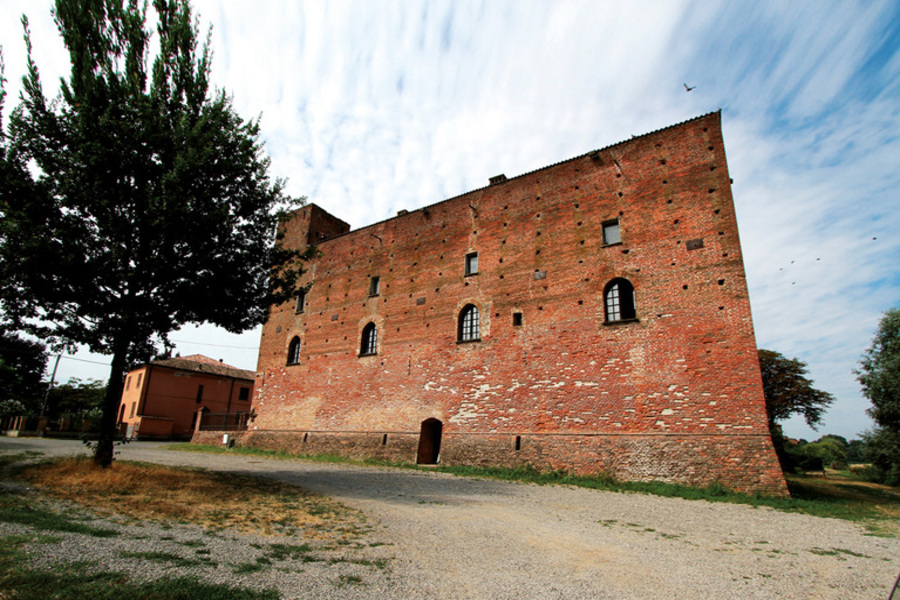Portalbera, between rural courts and spirituality along the Great River
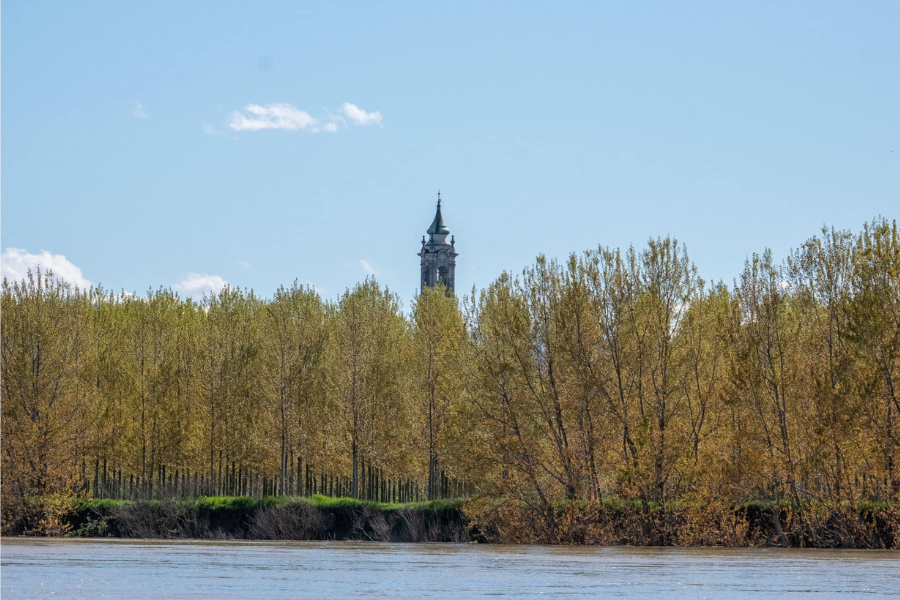
Located on the right bank of the Po River and not far from the confluence of the Versa, the municipality of Portalbera stretches over the area known as the‘Stradella Narrows‘.
Its history is steeped in the great river, the Po.
Video realised thanks to the Tourism of Roots project. Project promoted as part of planned activities for the 2024‘Year of Italian Roots‘.

Cover image from the Facebook page of All’Avamposto sul grande fiume
Origin of the name
In the 13th century, Portalbera was already the location of a port, as evidenced by several documents from that time. The place name appears in medieval sources as Portus Albera, which later changed to Port’Albera and eventually to present-day Portalbera.
The origin of the name would not refer to the suggestive but historically unconfirmed image of two imposing poplars at the entrance to the port, while it is more likely that the term Albera refers to the typical presence, as now, of poplars, albar in the local dialect.
As the seat of the bishop’s quarters of Pavia in past centuries, donated in 943 by kings Hugh and Lothair, it was equipped with two ports. One for the exclusive use of the bishop and the other for civil use. These ports were strategic points along the river, linked to the commercial and agricultural life of the community.
The village, located on the Via Romea or Francigena, which led from Canterbury to Rome, accommodated travellers in the‘Ospizio dei Pellegrini‘.
Besides pilgrims, merchants travelling from Piacenza to Genoa necessarily passed through Portalbera, as it was the nearest port of call to the Apennine ridge.
⚔️ Given its strategic importance, overlooking the river and at the northern hinge of the Stretta di Stradella, which, with the Upper Castle, the Lower Castle of Montalino, the walled city of Stradella itself and the Castle of Portalbera, closed the pass between the plains of Alessandria and Piacenza, it was at the centre of bitter disputes between the Pavese and the Piacentines.
the plains of Alessandria and Piacenza, was at the centre of bitter strife between the Pavese and the Piacentines. Let us not forget that Napoleon, during the second Italian campaign, had stationed his troops precisely between Portalbera and Stradella to cut off Austrian communications between Genoa-Alessandria and Piacenza, here waiting for the Austrian attack. But the Austrians did not realise they had been caught up from behind, so he had to meet them by defeating them at Montebello and Marengo.
In the village, there is a place called Piazza del Barcaiolo (Skipper’s Square), a testament to how strong the link between‘river life‘ and the village has always been.
The parish church of Santa Maria Assunta: a late baroque jewel
The spiritual centre of the village is the parish church of Santa Maria Assunta, built between 1739 and 1743 in late Baroque style. The interior is decorated with polychrome marble, with works by the painter Giovanni Ferrano associated with the school of Biella and a valuable wooden statue of the Madonna and Child made in 1782 by Pietro Vignoli, a well-known sculptor active in Lombardy.
It also contains, unusually for a relic, the entire body of Saint Fidelis.
The grandeur of the complex is completed by the magnificent 51-metre-high bell tower from 1777. The tallest in the entire diocese!
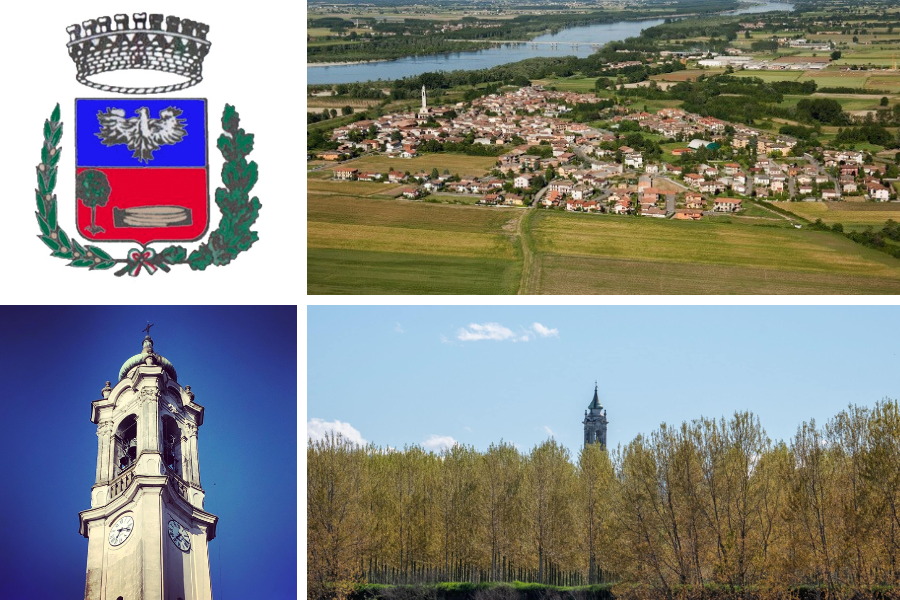
Images taken from the Facebook page of the municipality of Portalbera and the Facebook page of All’Avamposto sul grande fiume
The Pertusati Palace and the Curtàsa: nobility and rural architecture
Next to the church is an elegant 18th-century building, built in 1751 by Bishop Pertusati on the remains of the old medieval castle. This building, with its austere grandeur, is a reminder of the village’s noble and ecclesiastical past.
Opposite it is the Curtàsa, an enclosed polygonal architectural structure from the 16th century, one of the most important in the Oltrepò Pavese area. It is a complex of farmhouses and dwellings that once housed the bishop’s refectory: a rare and precious example of an articulated agricultural court, still largely preserved today.
👨🏫Il borgo was the birthplace of Luigi Heilmann, who was one of the most active linguists in the field of linguistic studies in Italy.
He was the first president of the Society of Italian Linguistics and founded the Interfaculty Centre for Theoretical and Applied Linguistics at the University of Bologna.
Protected nature and cycle paths along the Po River
Portalbera is in the Special Protection Area (SPA) of the Po River from Albaredo Arnaboldi to Arena Po, a protected area for river biodiversity.
🚵♀️È is also crossed by the PCIR 08 Po cycling route, perfect for those who want to explore the area at a leisurely pace, pedalling along the banks, through floodplains and poplar forests.
Sailing on the Grand River
Just before Portalbera, in the waters of the Po, you can see two foothills of the Apennines, the so-called piede della Rocca. The Apennines are, of course, the Ligurian-Emilian.
In Portalbera, right in the town of San Pietro, go on a nature adventure with the Motonave le Due Rive.
Passengers aboard the ferry can see the rocks of the Apennines looming out of the water.
On one of the two massifs is a small statue of the Madonna.
Is there anything left to admire? Certainly: long white sandy beaches, some wading birds, the colours of the sunset and, finally, the skyline of the area, with the very tall bell tower of the Portalbera church, further on the bell tower of the church of Arena Po, that of the church of San Gorgonio in Parpanese and behind it the gentle skyline of the hills.
The Portalbera Kitchen
The town’s culinary tradition includes meats such as coppa, pancetta and salami, risottos with porcini mushrooms or sausages. Fried arborelle – small crispy river fish – and rustic desserts such as almond cake or tart with homemade jam and schita, the traditional pancake made with water, flour, salt or sugar to taste and fried with lard.
Where to eat in Portalbera
🍽️All’avamPOsto sul Grande Fiume, in the hamlet of San Pietro, literally overlooking the river. The restaurant took part in the Oltrepdana edition of 4 Ristoranti, the famous television programme presented by Alessandro Borghese, where, among other things, you could taste an exquisite ‘risotto alla Bonarda’.
Those who prefer pizza can go to Pizzeria Mamma Mia in Piazza del Barcaiolo.
Village festivals
Summer, thanks to the Proloco of Portalbera, revolves around a number of festivals, such as the pesciolata in June, Birraland, the feast of Assumption of Mary (on 15 August), and closes the summer with Portalbera in Festa, at the end of August. There is no shortage of other festivals during the colder months.
In the heart of the Oltrepadana plain, near the Po River, Portalbera is like a small box of history and sacred architecture.
It is an intimate stage that offers an authentic vision of rural life and the transformations of an area where the Great River has left its mark.
Want to know more about Portalbera?
For those who want to dig deeper, we recommend reading the following volumes:
- Portalbera: people and rivers – Cognizioni, usi, redditi e prerogative della parrocchia, 1741 – 1781 | by Maurizio Gramegna
- From Portus Albera to Portalbera – life and history of a small village through the centuries | by Maurizio Gramegna | Guardamagna, 1998
- S. Maria Assunta in Portalbera. Church of the people of Portalbera. History and art. | by Maurizio Gramegna | Guardamagna, 2021
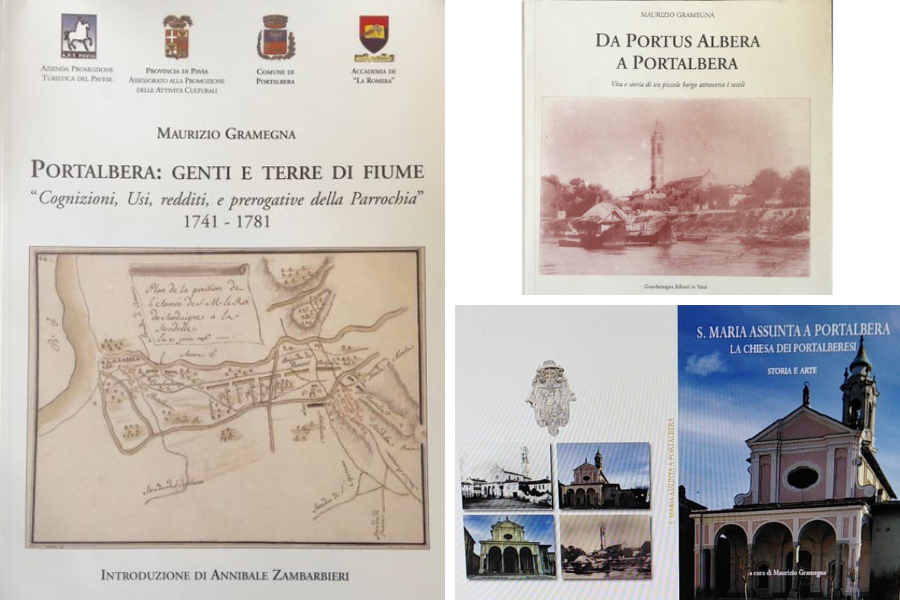

 Save your favorite events
Save your favorite events




